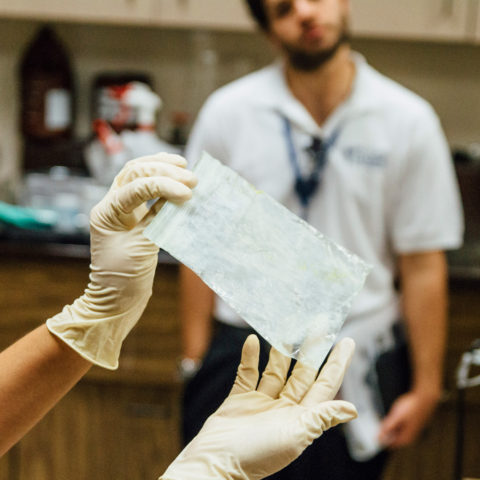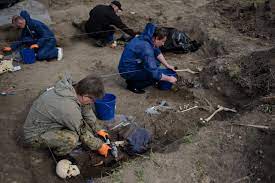Introduction
A disaster refers to a problem that happens over a short or long period that causes widespread damage. It can be experienced in the form of material, human, environmental, or economic loss that goes above the capacity of the impacted society or community to deal with using its own resources. A work environment emergency is an incident that happens and puts at-risk employees, clients, or the public. It can take various forms but is categorized into three groups: natural, external, or work-related. Many individuals usually encounter situations when someone around them is in immediate need of medical assistance, and they find themselves without a clue on how to help.
If individuals understand how to exactly respond to an emergency, they can take proper measures to avoid a possibly dangerous situation. The decision to assist others can provide them an opportunity to survive. On the one hand, the word incident can be described as an event, situation, or condition emerging in the course of work that led to injuries, damage to health, illnesses, or fatalities. On the other hand, an accident is a term that is commonly utilized and is defined as an unplanned occurrence that interrupts an activity’s completion, and that may include property damage (Kim et al., 2019, p.764). This paper is a report that examines measures to take after a disaster or emergency. This paper aims to show how information created during an inquiry is managed to guarantee it survives for future policy makers and researchers.
Aim and Objectives
When an incident is investigated, the focus should be on discovering the root cause so that it can be avoided in the future. This report gathers facts that can act as an insight into preventing disasters in a workplace environment. In this process, investigators are encouraged to not just record the steps of the occurrence. There are reasons for investigating an incident at work, such as knowing the costs, being obligated by law, determining compensation claims, and adhering to guidelines concerning accidents. Another motive is to discover the cause of the incident and avoid similar events in the future. Even if the inquiry is about a minor occurrence (Norris and Shepheard, 2017, p.20). An investigation can also be conducted to ensure that enough information is gathered to prevent incidents from happening later in a particular place.
Types of Investigation
There are various types of investigation, including forensic and medico-legal. The former means collecting and analyzing any crime-related physical evidence to reach a conclusion concerning a suspect, as in Figure 1.0. An investigator looks at fluid, blood or fingerprints, hard drives, residue, computer or other technology to determine how a crime was committed (Kim et al., 2019, p.768). In this type of investigation, there are different ways it can be done.

For instance, any physical evidence is documented and collected in crime scene investigations to establish what may have happened or offer a solution. This process also involves an investigator analyzing what they collected at a scene in an attempt to prove the credibility as well as the relevance of the proof. A ballistics expert is a professional in the crime scene investigation field. Their role is to study the path of ammunition and match bullets to potential firearms. There is also an odonatologist who specializes in teeth and bite marks to recognize victims of a mass disaster.
Apart from the crime scene investigation, there is forensic archaeology whereby the focus is on human remains that are greatly decomposed. Here the investigator searches for clues by studying the bones, for example, they can conduct carbon dating to establish their age as in Figure 2.0. From such, they can at times determine the cause of death. If a mass grave is discovered, the victims’ identities can be found with the help of software that does facial reconstruction.

Regarding medico legal death investigation, the role of an investigator is to investigate any deaths that fall under the jurisdiction of a medical examiner, including every suspicious, unexplained, violent, and unanticipated death. They are responsible for the dead individuals, whereas the local police are in charge of the scene as in Figure 3.0. The former performs scene investigations stressing information developed from the decedent and determining the level to which further investigation is needed. These individuals should have a combination of skills and education in the fields of law and medicine.

Comparison
The two types of investigation are different but done to solve the cause of an incident. For instance, in forensics, the investigator attempts to find physical evidence that will lead to the perpetrator or how an accident started. For example, fingerprints can help determine the individual responsible for blocking a door during a fire breakout and result in the death of people. In medico-legal, someone tries to explore the reason that led to the death of a person by conducting a postmortem.
Assessment of the Issues Relating to the Evidential and Information Gathering Processes
Pre-Conceived Ideas
The steps followed in an investigation procedure are more straightforward. For instance, an investigator gathers data, conducts analysis, determines the findings, and lastly makes suggestions. Even though all this appears to be simple, each step can have its drawbacks. During the procedure, one needs to have an open mind (Priyadharsini et al., 2020, p.795). Having ideas before beginning the investigations might lead to wrong paths followed. Key facts might remain uncovered if this happens, too, as Priyadharsini et al. (2020, p.796) suggested. It is essential to consider every possible cause, as suggested by (Priyadharsini et al., 2020, p.796). Having notes about different ideas is a great practice, however, conclusions should only be reached when every piece of data is collected.
Site Examination Approval
Prior to the collection of data, one needs to examine the site for the purpose of an overview, take measures to preserve evidence, and identify every witness. A site can only be disturbed in some areas if one has approval from governmental officials such as an inspector, coroner, or police. Physical proof is probably the most non-scandalous data available (Priyadharsini et al., 2020, p.799). It is subject to rapid change and needs to be recorded first. According to one’s expertise of the work process, they may desire to confirm how injured workers are positioned, products and equipment in use, time of delay, safety devices, and weather conditions.
One may desire to have photographs of the area and other particular items before moving anything. A subsequent study of the photos may show what was missed initially (Moore and Lakha, 2007, p.99). Sketches of the scene according to necessary measurements may be helpful in the analysis since they can explain any documented reports. Broken equipment, debris, and samples of items involved may be set aside for further examination. It is compulsory for notes to be recorded about the items’ location despite the photos taken earlier.
Interviewing Witnesses
Even though there may be times when a person is unable to accomplish that, all the efforts need to be gathered to assist in interviewing witnesses. Sometimes, they may be the primary source of information due to the interviewer being asked to study an incident without checking the scene just after an occurrence as in Figure 4.0. Since emotional stress might be affecting a witness at the moment, conducting the process is the toughest task one encounters.

Nevertheless, the interview must happen as soon as an incident happens. If witnesses get a chance to have discussions about what occurred, bias may reign as most of them will accept the ideas of the majority to be the truth. Additionally, the interviewing process needs to focus on one individual at a time when alone (Siriwardana et al., 2018, p. 1091). On the one hand, the interviewer may elect to carry out the procedure at the event scene whereby it is easy to explain the events. On the other hand, it can also occur in a quiet room with fewer distractions. The decision is dependent in part on the incident’s nature and the psychological status of the witnesses.
This process aims to get a witness’ perspective by listening to them as they describe the occurrence. The interviewer needs to ensure that the individual is calm and not upset, tell them concerning the reason behind the procedure, and listen as they speak. Additionally, he or she must clarify the statement’s correctness, short design notes, and ask whether the witness is comfortable if the dialogue is recorded.
Among the issues an interviewer has to avoid there are intimidating the witness, interjecting, prompting, asking leading questions, showing emotions as well as jumping to conclusions. Open-ended questions that allow for a conversation are preferred. The questions the interviewee has to answer vary with every incident. However, general questions apply to any event and can be posed to a witness. For example, where they were during the incident, what they heard or saw, what they were doing when the incident happened, what the victim was doing before getting injured, did the work conditions looked like at the time, how such events can be avoided in the future, what was the cause of the incident, in their view.
Asking questions related to the event and gathering facts from responses is a great way of understanding what happened. However, people need to be careful in terms of examining the correctness of all statements made during an interview. This guarantees that damage or further injury does not happen (Siriwardana et al., 2018, p.1093). Replaying or re-enacting incidents as they occurred is another technique of determining a sequence of incidents. An individual is requested to replay the actions in a gradual manner that took place.
Information is available in documents such as inspection reports, health and safety committee minutes, maintenance reports, and safe-work procedures. All key pieces of data need an examination to check what might have happened and the changes to be made to prevent a similar situation in the future. At this phase of the process, the majority of the ideas concerning what occurred must be known. As much effort as this procedure has taken to achieve, it only depicts a portion of the goal.
One needs to maintain an open mind to any possible as they look for every relatable fact. There may still be gaps in the narratives surrounding the cause of the incident. They must interview witnesses for a second time to fill the loopholes in the captured knowledge. When the scrutiny is complete, an interviewer ought to note down a narration of the event, representing every probable cause. This cannot be described as additional work as it is a draft for part of the final report (Siriwardana et al., 2018, p.1095). All conclusions ought to be studied to see whether there is proof, the latter is a director based on eyewitness accounts or simple assumptions.
Importance of Record Keeping
Information technology can prepare organizations for emergency situations and disasters. Records management is an essential exercise as it guarantees the continuity of businesses and efficient recovery after any disaster. Preparedness covers every measure which is required to remain prepared and also minimize the influence of emergencies on business activities. Thus, this is made part of records management so that a record that is crucial for the functioning of the business is protected and its ease of accessibility is ensured prior, during, and after a disaster.
The Processes Required to Ensure the Record of the Inquiry Is Comprehensive and Well-Ordered
A public inquiry investigates issues of serious concern, scrutinizing past decisions and occurrences. It is thus critical that data created or utilized during the course of an inquiry is managed to guarantee its survival for future researchers and policymakers. Without productive management of information right from the beginning, a public inquiry will fail to run well, justify findings or offer a lasting record. A public inquiry is conducted on behalf of the Crown, which thus means that a record created or provided to the inquiry is a public record as determined by the Public Records Act 1958.
An individual, who is responsible for it, such as the chairman of a public inquiry, has an obligation to arrange for the selection of those records which must be permanently preserved and for their safekeeping. According to the Inquiry Rules 2006, it is the responsibility of the chairman as well to guarantee that it is comprehensible as well as well-ordered. There are certain processes that can help achieve this, for instance, establishing roles as well as responsibilities of the relevant parties. When different people understand what they are needed to do, less confusion is experienced, and thus the order is translated into record keeping. The other is developing and implementing an information management policy that covers doctrines for the management, review, and transfer of records.
Conclusion
The paper explains that a disaster is a problem that happens over a short or long period that causes widespread damage. It can be experienced in the form of material, human, environmental, or economic loss that goes above the capacity of the impacted society or community to deal with using its own resources. A work environment emergency is an incident that happens and puts at-risk employees, clients, or the public. In spite of being able to appear in various forms, disaster is categorized into three groups including natural, external, or work-related.
It is common for individuals to encounter situations whereby someone around them is in need of immediate medical assistance, and find themselves without a clue on how to help. It is thus important to teach individuals concerning disaster management. This would be helpful in situations whereby the response team is late. More lives would be saved and less property damaged as a result of people using the acquired knowledge to reduce the extent of harm.
Recommendations
In a work environment, there are accidents that happen and can be avoided, while others cannot be prevented. It is important that every worker understands that their actions can lead to the harm of people around them, thus, should aim to carry out all tasks given with total care. An example is when a fire breaks out as a result of a person being careless. This could have been avoided, but due to negligence by one individual, many people get affected. Apart from physical harm to persons through burns or death, one can also get scarred psychologically. There are cases of victims of fire accidents suffering from PTSD, which impacts their quality of life and those around them.
For the incidents that appear to be unpreventable, it is important that notes be kept of them so that reference is done in the future to avoid damage that may have been experienced in the past. Additionally, to prevent accidents, one can choose to use record keeping which is an essential tool that can help save lives and protect property from damage. The personnel responsible for that should be kept aside from others for the purpose of ensuring that the records are well-ordered and comprehensible. Individuals also need to be educated on how to respond during an incident. Statistics suggest that most deaths occur due to people panicking instead of reacting in an orderly manner that could have helped save their life and that of others.
References
Medicolegal Death Investigators Career Spotlight | Duquesne University. (2019).
Background to Forensic Archaeology and Anthropology. (2013).
Kim, S., Kim, J. and Kim, J. (2019). National disaster scientific investigation and disaster monitoring using remote sensing and geo-information. Korean Journal of Remote Sensing, 35(5_2), pp. 763-772.
Interviewing Witnesses for Investigation Cases. (2022) Private Investigator and Investigation Resources.
Forensic investigation degree. (2022).
Moore, T. and Lakha, R. (2007) Tolley’s handbook of disaster and emergency management. Routledge.
Norris, E. and Shepheard, M. (2017) How public inquiries can lead to change. Institute for Government. London. Web.
Priyadharsini, K., Kumar, J. D., Babu, C. G., Surendiran, P., Sankarshnan, S. and Saranraj, R. (2020) An experimental investigation on communication interference and mitigation during disaster using life technology. In 2020 International Conference on Smart Electronics and Communication (ICO SEC) pp. 794-800. IEEE.
Siriwardana, C. S., Jayasiri, G. P. and Hettiarachchi, S. S. L. (2018) Investigation of efficiency and effectiveness of the existing disaster management frameworks in Sri Lanka. Procedia Engineering, 212, pp. 1091-1098.